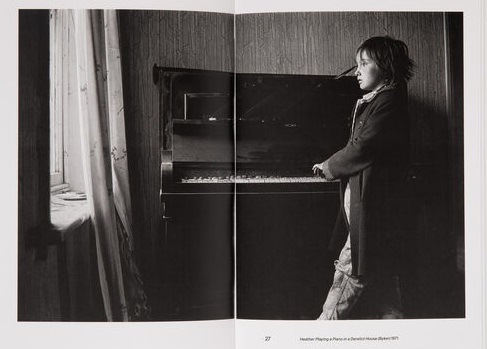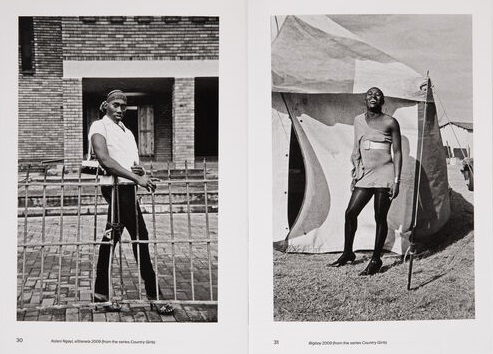Two notable series of photographs by Sirkka-Liisa Konttinen capture working-class life in the north-east of England in the last quarter of the twentieth century: “Byker” (1969-83), named after a Newcastle neighbourhood, and “Writing in the Sand” (1978-98) about taking time out on the local coast.

Sean Sheehan
She had come to England in the 1960s from her native Finland for perfectly understandable reasons –“London was where it was at, And I’d fallen in love with the Beatles” – and dropped out of a filmmaking course in London to join a photography collective in Newcastle.
In the architecture of that city, in the region’s shipbuilding industry and in working-class communities like Byker, where she lived for seven years, she discovered another place ‘where it was at’– as she explains in a Tate video.
At a time when documentary photography, especially of the working-class, was not a recognised art form, the collective established its own gallery; Chris Killip was part of it for a while.

Sirkka-Liisa Konttinen’s photographs are the subject of one of the four excellent and affordably priced books in the Tate Photography series.
Each one opens with a succinct introduction and an interview with the photographer, providing salient information about their work and values, followed by a selection of their photographs.
Each of the four is drawn to drawn to communities which for reasons bound up with class and social prejudice do not receive the recognition they deserve.
For Sabelo Mlangeni, born near Johannesburg in 1980, this included rural areas around his hometown and, in his series “Invisible women” (2006), the night street sweepers of Johannesburg. Just as Konttinen had to come to be accepted in Byker, Mlangeni took eight months getting to know the street cleaners, sometimes sweeping alongside them with his camera left at home.

To just appear as a camera-toting visitor, in the canonical documentary way, would have been an affront to what he was seeking to record.
For “Country girls” (2003-9), he photographed queer communities in a rural area where he grew up.
Sheba Chhachhi has given voice to South Asian communities by collaborative staged photographs and multimedia installations.
Her first photograph was of a woman ascetic on the verandah of a temple she used to pass on the way to college.
It would lead to “Initiation chronicle”, a project about a group of women sadhus (religious renunciates), and photographs from this project and others are featured in the book about her. The interview with her is fascinating.
 Liz Johnson Artur, the fourth artist in the Tate Photography series, joined protestors at Black Lives Matter events in London in 2020.
Liz Johnson Artur, the fourth artist in the Tate Photography series, joined protestors at Black Lives Matter events in London in 2020.
She explains in her interview how and why she photographed the events and printed her work on braille editions of two books in her possession.
Hopefully more books will follow in a valuable series that charts and celebrates meaningful photography from around the world.
Tate Photography: Sabelo Mlangeni, Tate Photography: Liz Johnson-Artur, Tate Photography: Sirkka-Liisa Konttinen, Tate Photography: Sheba Chhachhi are published by Tate Publishing.
(Photographs copyright of Tate Publishing, supplied for publication.)












.jpg)












